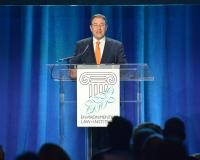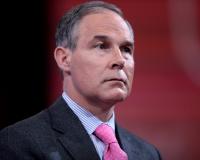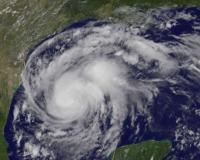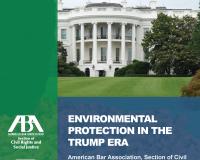
Vibrant Environment
All | Biodiversity | Climate Change and Sustainability | Environmental Justice | Governance and Rule of Law | Land Use and Natural Resources | Oceans and Coasts | Pollution Control

On October 18th, the Environmental Law Institute hosted its annual ELI Award Dinner. Affectionately known as the “environmental law prom,” over 650 of the best and brightest environmental professionals from across the country descended upon Washington, D.C., to connect with colleagues and honor this year’s winner of the ELI Environmental Achievement Award.

EPA Administrator Scott Pruitt’s “back to basics” agenda for the Agency suggests a renewed focus on the fundamentals of environmental protection. But according to a new article in the November 2017 issue of the Environmental Law Reporter, “Pruitt is not preserving the ‘basics’ of our environmental protection system, but deconstructing them.”

Electronic waste, or e-waste, is the fastest-growing segment of the municipal waste stream. Nearly 100% is recyclable, and valuable materials like plastics, metals, and glass can be recovered. E-waste also can contain toxic materials, like lead, mercury, and arsenic. Worldwide, up to 50 million tons of e-waste is expected to be dumped in 2017. Yet, in the United States, less than 30 percent is recycled.

As reported in the Environmental Law Reporter’s Weekly Update this month, two cases involving the controversial Dakota Access Pipeline have been decided in the courts.
Chief among those cases was Standing Rock Sioux Tribe v. Dakota Access. In that case, a district court held that the Dakota Access pipeline could continue to operate while the U.S. Army Corps of Engineers corrects deficiencies in its environmental assessment for the project.

On September 4-6, the Organization of American States (OAS), UN Environment, the Global Judicial Institute on the Environment (GJIE), the World Commission on Environmental Law (WCEL), the Supreme Court of Chile, and other partners convened the 2nd Inter-American Congress on the Environmental Rule of Law in Santiago, Chile.

While EPA under Administrator Scott Pruitt seeks to drastically reduce the social cost of carbon (SCC), insurers already know that 2017 delivered the most expensive Atlantic hurricane season ever for insurance companies. Beyond this year, since the 1980s, the annual average losses to insurers have risen, increasing over the last decade from $10 billion to about $50 billion. “Insurers are rightfully worried that, in the long term, climate change could devastate their industry,” reported the Los Angeles Times. While Texas, Florida, and Puerto Rico flood, EPA recalculates, and insurance companies add up their costs.

The federal Endangered Species Act (ESA) enjoys considerable popular support and provides enormous ecological and other benefits beyond the protection of particular species. Yet the Act is not without its skeptics—longstanding calls to overhaul the Act have only gained traction in the 115th U.S. Congress and new Donald Trump Administration.

September 22 marked the beginning of fall, and for some, that means it’s officially apple-picking season. Coincidentally, this isn’t the only type of apple officially in season. September 22 also marked the release date of Apple’s iPhone 8. And it’s not too long until you have your pick of a new Apple product with the release of the iPhone X on November 3.

Here at ELI, we’ve seen a growing demand for unbiased answers and analysis on how deregulatory initiatives by the Administration and Congress will impact environmental protection, governance, and the rule of law. To that end, we recently collaborated with the American Bar Association’s Civil Rights and Social Justice Section to publish an ebook to aid understanding of the legal mechanisms that the White House, federal agencies, and Congress are using to change the regulatory approach to environmental, natural resources, and health and safety protections. The book attempts to answer these questions: What are the pathways and potential impacts of these ongoing regulatory changes? What are the opportunities for the public and other stakeholders to engage relative to these initiatives?

Since the beginning of the Industrial Revolution, coal-fired systems have been emitting a pollutant we did not even know existed . . . until now. In 2014, a team of scientists studying arsenic in the Dan River coal ash spill site in North Carolina discovered a new nano-scale version of titanium oxides that had never been seen before.* What they discovered were titanium suboxides, or so-called Magnéli phases, which were first synthesized in the 1930s. These substances are extremely rare in nature, seen only in rocks having an extraterrestrial origin (meteorites, lunar rocks, and interplanetary dust particles), and at one known point on the earth’s surface—rock formations on the central coast of western Greenland.